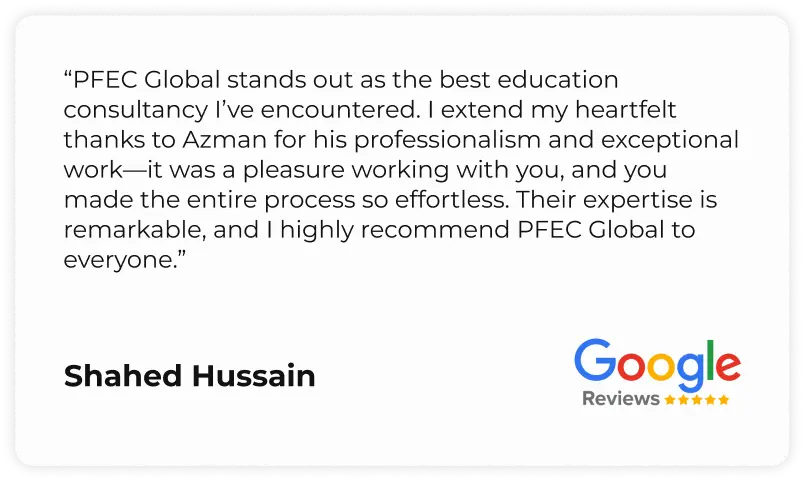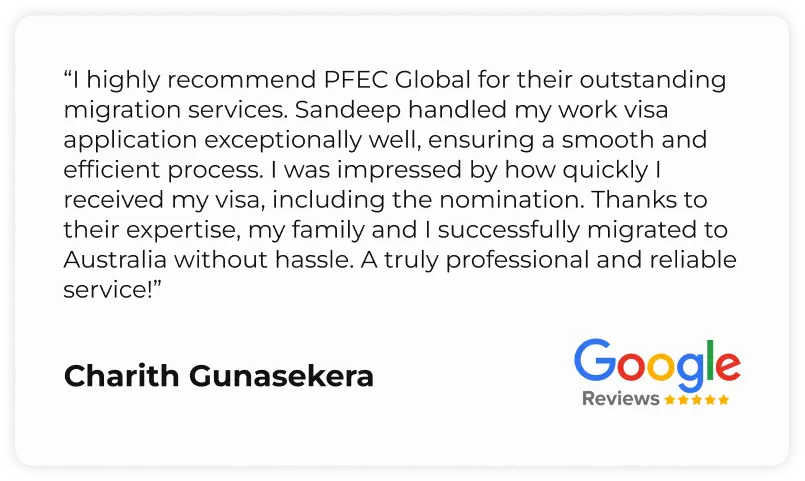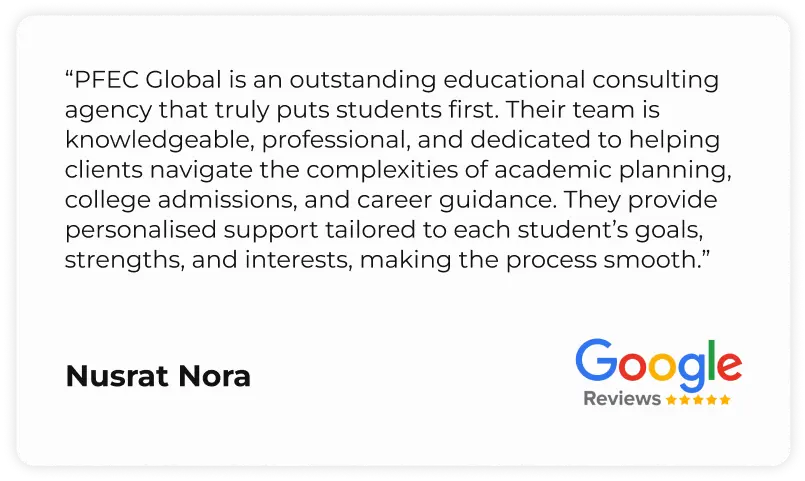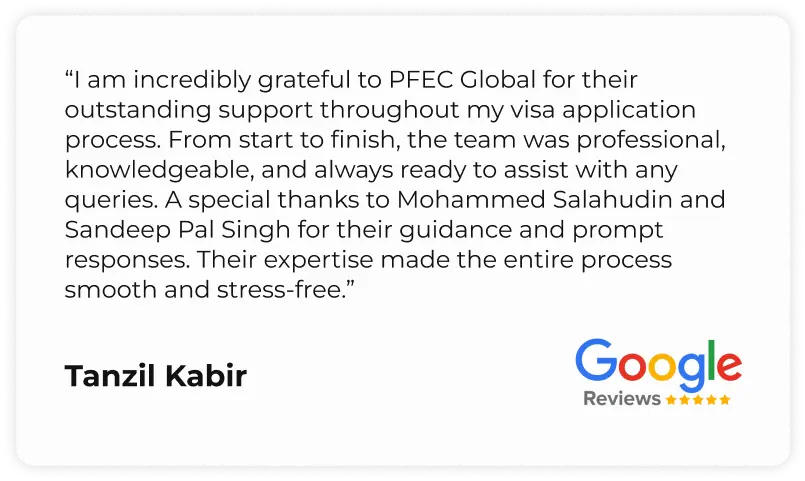Skilled Nominated Visa Subclass 190 – Your Gateway to Australian PR with State Sponsorship

Health insurance is an essential requirement for a worry-free experience while studying abroad.
International Medical Coverage: Health insurance provides you with the peace of mind to receive medical care anywhere in the world, ensuring you won't face overwhelming expenses.
Visa and Enrollment Support:Having health insurance can make obtaining a student visa and enrollment easier. This reduces the chances of your applications being delayed or rejected.
Financial Protection: In the event of an unexpected incident, having health insurance ensures that your medical expenses are covered. It safeguards you from potential financial stress.
Legal Compliance: Many countries create specific health insurance for international students. Securing this insurance not only safeguards your well-being but also shields you from potential legal complications and the risk of deportation. Protect yourself and ensure a smooth study experience abroad.
Comprehensive Care: Health insurance covers expenses related to hospital stays, prescription medications, mental health support, and much more.
Register with Us to Take the Next Step
Country-wise rules
The USA has a unique system that students must navigate to meet certain criteria. In contrast, Australia requires international students to have Overseas Student Health Cover (OSHC). Similarly, in the UK, students are obligated to pay an Immigration Health Surcharge (IHS) to gain access to the National Health Service (NHS). Additionally, some universities have their own specific requirements, which often include particular coverage limits in their health insurance schemes.
Selecting a plan
Recognizing the diverse needs of students, universities create customized health insurance policies that provide essential coverage. Students can conveniently enroll in these plans during their registration process, ensuring peace of mind from day one. If a university does not offer its own insurance, students must seek private health insurance, which may not fully meet their specific needs. It's crucial for universities to invest in comprehensive health insurance options that prioritize student well-being and security.
Purchasing Health Insurance
Health insurance is essential for students, and selecting the right plan is vital for their well-being. By carefully considering their unique needs, students can find a plan that offers the best balance of cost and benefits. After choosing a suitable plan and making the necessary payment, students will receive a certificate as proof of their coverage, ensuring assurance during their academic journey.
Country-wise rules
The USA has a unique system that students must navigate to meet certain criteria. In contrast, Australia requires international students to have Overseas Student Health Cover (OSHC). Similarly, in the UK, students are obligated to pay an Immigration Health Surcharge (IHS) to gain access to the National Health Service (NHS). Additionally, some universities have their own specific requirements, which often include particular coverage limits in their health insurance schemes.
Country-wise rules
The USA has a unique system that students must navigate to meet certain criteria. In contrast, Australia requires international students to have Overseas Student Health Cover (OSHC). Similarly, in the UK, students are obligated to pay an Immigration Health Surcharge (IHS) to gain access to the National Health Service (NHS). Additionally, some universities have their own specific requirements, which often include particular coverage limits in their health insurance schemes.
Skilled Nominated Visa Subclass 190 – Your Gateway to Australian PR with State Sponsorship
If you’re a skilled professional aiming for permanent residency (PR) in Australia, but find yourself just short of points or without employer sponsorship, the Skilled Nominated Visa Subclass 190 may be your solution.
This visa gives you 5 additional points through state or territory nomination, often helping you reach the minimum 65-point threshold required to be invited for PR. That small boost can make a big difference.
Whether you’re looking for career stability, family security, or a long-term future in Australia, the Subclass 190 visa offers a reliable pathway—especially if your occupation aligns with a specific state’s needs.
What is the Skilled Nominated Visa Subclass 190?
The Subclass 190 visa is a points-tested permanent visa for skilled professionals nominated by an Australian state or territory government.
Unlike the independent Subclass 189, this visa requires you to:
- Have an occupation listed on a state’s migration occupation list
- Be nominated by that state or territory
- Commit to living and working in the nominating state for at least two years
Once nominated, you receive 5 additional points towards your points test score—significantly improving your chances of receiving an Invitation to Apply (ITA) through SkillSelect.
With this visa, you can:
- Live, work, and study permanently in the nominating state or territory
- Enrol in Medicare, Australia’s public health system
- Include eligible family members in your visa application
- Apply for Australian citizenship after meeting residency requirements
Expert Tip: If you’re falling short on points, the state nominated visa Australia (Subclass 190) can be a faster route to PR compared to Subclass 189.
How Does Australian Migration with State Sponsorship Work?
State nomination plays a key role in Australia’s skilled migration program. Here’s how it works:
Step-by-Step Process for Subclass 190 Nomination:
- Submit an Expression of Interest (EOI):
Create an EOI in SkillSelect. Indicate your nominated occupation and the states or territories where you’re open to living. - Be Invited by a State or Territory:
States assess EOIs based on demand for your occupation, your skills, work experience, and total points. - Receive a Nomination and ITA:
Once nominated, you’ll receive an Invitation to Apply for the Subclass 190 visa. - Lodge Your Visa Application:
Submit your complete application, including skills assessment, English test scores, and supporting documents.
Popular States for Nomination:
Each state has its own occupation list, eligibility requirements, and application process:
- New South Wales (NSW)
- Victoria (VIC)
- Queensland (QLD)
- South Australia (SA)
- Western Australia (WA)
Nomination availability changes frequently depending on state migration targets.
Expert Tip: Regularly check the state migration websites to stay current with their latest occupation lists and nomination criteria.
Skilled Nominated Visa Subclass 190 vs Skilled Independent Visa Subclass 189
Choosing the right permanent residency (PR) pathway depends on your points score, occupation, and willingness to commit to a specific state. Here’s how the two visas differ:
| Feature | Subclass 189 | Subclass 190 |
|---|---|---|
| Sponsorship | Not required | State or territory nomination required |
| Bonus Points | No bonus points | +5 points for nomination |
| Location Requirement | Live anywhere in Australia | Commit to live and work in nominating state for 2 years |
| Competitiveness | High cut-off (usually 80+ points) | More flexible if skills match state demand |
| Visa Type | Permanent | Permanent |
Expert Tip: If your total score is below 70, the state nominated visa Australia (Subclass 190) can help you reach the required points threshold and improve your chances of receiving an invitation.
Who Should Apply for PR Through Subclass 190?
The Skilled Nominated Visa Subclass 190 is ideal for skilled applicants who:
- Work in an occupation listed on a state or territory’s Skilled Occupation List
- Need additional points to meet the 65-point minimum
- Are willing to live and work in the nominating state or territory for at least two years
High-Demand Occupations Often Nominated:
- ICT and software professionals
- Engineers (civil, electrical, mechanical)
- Registered nurses and allied health professionals
- Skilled trades and technicians
Expert Insight: Different states prioritise different occupations.
- Victoria often invites IT professionals
South Australia has consistent demand for engineers and healthcare workers
Research current demand before submitting your Expression of Interest (EOI).
Eligibility Criteria – 190 Visa Requirements
To apply for the Subclass 190 visa, you must meet the following eligibility criteria:
General Requirements:
- Age: Under 45 years at the time of invitation
- Occupation: Must be on a current state or territory Skilled Occupation List
- Skills Assessment: Positive result from an approved Australian assessing authority
- Points Test: Score 65 points minimum, including the 5 bonus points from nomination
- English Proficiency: IELTS overall 6.0 (minimum in each band), or equivalent PTE score (50)
- Commitment: Willing to live and work in the nominating state for at least two years
- Health and Character:
- Pass a medical exam
- Provide police clearance certificates for all countries lived in for 12+ months in the past 10 years
- Pass a medical exam
Expert Tip: Do not rely on general occupation lists. Always check your nominating state’s current occupation list before applying—these are updated regularly based on local workforce demand.
Step-by-Step: How to Apply for Skilled Nominated Visa Subclass 190
Applying for the Skilled Nominated Visa Subclass 190 involves several key steps. Planning ahead and keeping your documents ready is essential.
Step 1: Obtain a Positive Skills Assessment
- Apply to the relevant Australian assessing authority for your nominated occupation.
- Ensure your qualifications and employment documents match their requirements exactly.
- A valid assessment is usually required before you can be nominated.
Step 2: Submit an Expression of Interest (EOI)
- Create your EOI in SkillSelect.
- Indicate the Australian states or territories where you’re willing to live and work.
- Include your occupation, English test results, points total, and other eligibility details.
Step 3: Receive State Nomination
- If your occupation and profile meet a state’s criteria, they may nominate you.
- Once nominated, you gain 5 additional points, boosting your total score.
Step 4: Receive an Invitation to Apply (ITA)
- After nomination, the Department of Home Affairs issues your Invitation to Apply.
- You have 60 days to lodge your visa application.
Step 5: Lodge Your Application via ImmiAccount
- Complete your application online and upload all required documents.
- Pay the visa fee.
- Schedule your medical exam and submit police clearance certificates.
Step 6: Track Your Application
- Processing takes 9 to 14 months, depending on your document quality and individual circumstances.
- Check ImmiAccount regularly for updates or requests.
Expert Tip: Start preparing your documents before your ITA arrives. This ensures you can submit a complete application within the 60-day window.
Essential Documents for Your 190 Visa Application
Clear, complete documentation is key to approval. Here’s what you need:
Identity and Travel
- Current passport bio page
- Any other relevant IDs or prior visa documents
Skills and Nomination
- Positive skills assessment result (must match nominated occupation)
- State nomination approval letter
English Language Proficiency
- IELTS (overall score 6.0 minimum), PTE Academic (score 50+), or equivalent
Employment and Work History
- Job offer letters, reference letters, payslips, tax records
- Should clearly outline duties, dates, and full-time status
Education Credentials
- Degree certificates, transcripts, or academic mark sheets
Police Clearances
- From each country lived in for 12+ months during the last 10 years
Medical Examination
- Schedule your health check with a panel physician after receiving your ITA
Expert Insight: Upload only clear, legible, and certified documents in English. Low-quality scans or partial files often lead to long delays.
Processing Times and Costs for the Skilled Nominated Visa Subclass 190
Understanding the full cost and timeline helps you plan confidently for your state nominated visa Australia.
Visa Application Fees:
| Applicant Type | Fee (AUD) |
|---|---|
| Main Applicant | AUD 4,770 |
| Additional Family Members | Varies by age |
| Second Instalment (Low English)* | AUD 4,885 (if required) |
*Applies to dependents 18+ with less than functional English. Paid only if requested before grant.
Visa Processing Time
- 9 to 14 months on average
Processing time depends on:- Quality and completeness of documents
- Timely health and police checks
- Migration program quotas
- Quality and completeness of documents
Expert Insight: Complete, well-organised applications often receive decisions sooner. Avoid delays by uploading all documents at once.
Additional Costs to Prepare For
| Item | Estimated Cost (AUD) |
|---|---|
| Skills Assessment | AUD 500 – 1,000 |
| English Language Test | AUD 385 |
| Medical Examination | AUD 300 – 400 |
| Police Clearance (each country) | AUD 20 – 100 |
Benefits of the Skilled Nominated Visa Subclass 190
The Subclass 190 visa is more than just a PR grant. It unlocks significant benefits for your future in Australia:
Key Benefits:
- Permanent residency status with the right to live, work, and study in Australia
- Access to Medicare, Australia’s national healthcare scheme
- Free public schooling for children in your nominated state
- Ability to sponsor eligible family members for permanent residence
- Pathway to Australian citizenship after four years of lawful residence (including one year as a permanent resident)
Expert Insight: The 190 visa is particularly valuable if you want stability and state-aligned job opportunities. It combines career freedom with long-term security.
Common Mistakes to Avoid with Your State Nominated Visa Australia
Here are key pitfalls to watch for—mistakes that delay applications or cause rejection:
Frequent Errors:
- Using outdated occupation lists: Each state has its own Skilled Occupation List (SOL). These change regularly. Always check the current list before submitting your EOI.
- Delaying after state nomination: Once nominated, you have only 60 days to submit your visa application. Late submissions require starting over.
- Failing to update your EOI: Update your EOI if your job, qualification, or English test score changes. An outdated profile can lower your chances of being invited.
- Incorrect points claim: Miscalculating your experience or omitting salary/tax documents often leads to rejection during verification.
Expert Tip: Think of your EOI as a dynamic profile. Update it just like you would a resume—frequently and accurately.
Why Choose PFEC for Your Subclass 190 Visa Application?
At PFEC Global, we offer more than just form-filling—we provide a strategic migration plan tailored to your goals.
What You Get with PFEC:
- 98% Approval Rate
Trusted by skilled professionals for reliable and accurate visa outcomes. - Complete Visa Management
We manage your skills assessment, points calculation, EOI submission, and full visa application with expert care. - State Strategy Support
We match your profile with states most likely to nominate you—based on up-to-date occupation lists and policy insights. - Ongoing Support After Approval
From job search guidance to post-arrival assistance, PFEC helps you settle into your new life in Australia with confidence.
Expert Insight: Many skilled migrants miss out on nomination simply by choosing the wrong state or not updating their EOI. We guide you from the first step to final approval—and beyond.
Ready to Start Your Australian PR Journey with Skilled Nominated Visa Subclass 190?
Let PFEC help you move forward with clarity, confidence, and a clear plan.
🎯 Book Your Free Consultation
Speak to our migration experts and get your personalised Subclass 190 roadmap.
📄 Download Our Visa Checklist
Know exactly what documents you need for your Subclass 190 application—no guesswork.
👉 Begin your journey with PFEC today—your trusted partner in Australian migration success.
Simplify your Education & Migration Needs with PFEC Global's Expert Guidance
Book Free Consultation →



What are my options and possibilities for submitting an Australian PR application?
Depending on your situation, you have many options when applying for an Australian Permanent Residency (PR). The Skilled Work Regional (Provisional) Visa (Subclass 491) is for regional employment; the Skilled Nominated Visa (Subclass 190) is for skilled workers who need state or territory nomination. There are several routes for family sponsorship and employer-sponsored visas, each with particular perks and requirements
If I don't have enough points to submit an application for a PR. What are my options?
If your points total is not enough for a PR application, think about being nominated by a state or territory, which may provide more points. Getting additional job experience, taking language exams like the PTE or IELTS, or going to further school in Australia to improve your credentials are all good ways to improve your English.
Does applying for a new course and student visa when I know my TR (Temporary Resident) is about to expire present any risks?
Applying for a new PR pathway courses in Australia and a student visa while your Temporary Resident visa is about to expire might be dangerous. To prevent possible visa denial, make sure your application is complete and satisfies all Department of Home Affairs standards. Learn the terms of any bridging visa that could be applicable throughout the application process, and if you’re not sure whether your application is complete or if you qualify, get expert help.